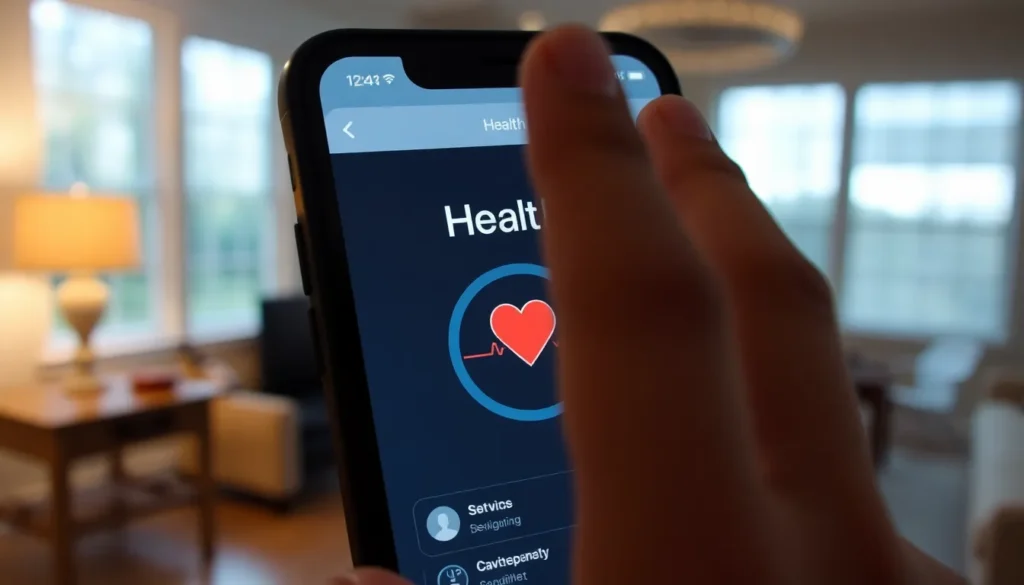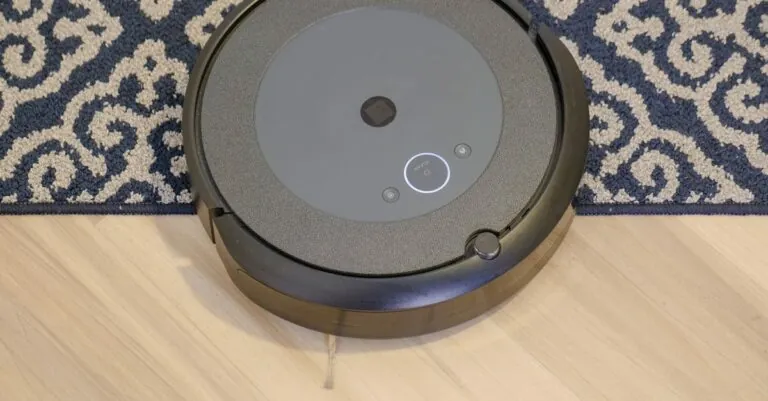In a world where fitness trackers are the new must-have accessory, it’s only natural to wonder if that trusty iPhone can keep up with your heart’s demands. Can you really check your heart rate without strapping on a fancy gadget? Spoiler alert: you can! With a few taps, your iPhone can transform into a mini health guru, giving you insights into your ticker’s tempo.
But before you start racing to the app store, let’s dive into how this seemingly magical feature works. Whether you’re an exercise enthusiast or just someone who wants to ensure their heart isn’t doing the cha-cha during a Netflix binge, understanding this feature can be a game-changer. So grab your phone and let’s explore how to keep your heart in check—all while avoiding any unnecessary cardio.
Table of Contents
ToggleCan You Check Your Heart Rate on Your iPhone?
Yes, checking heart rate on an iPhone is possible without extra equipment. Users can utilize the built-in Health app for this feature. The app leverages the iPhone’s camera and flash to measure heart rate. By placing a finger over the camera lens, the device detects the color changes in the blood flow.
Many find this functionality beneficial for daily health tracking. Real-time heart rate readings can enhance awareness of one’s fitness level. The iPhone calculates beats per minute accurately, providing instant feedback. This approach makes monitoring simple for both beginners and seasoned fitness enthusiasts.
Heart rate data syncs seamlessly with the Health app, where users can view historical trends. By analyzing past readings, individuals gain insights into their cardiovascular fitness. The app categorizes information, making it easy to access and interpret.
In addition to the built-in Health app, third-party apps offer enhanced features. Some of these applications provide more advanced metrics, such as heart rate variability and recovery time. Downloading a reliable app may enrich the user experience for those looking for detailed analyses.
It’s crucial to remember that while the iPhone provides useful data, it’s not a substitute for professional medical equipment. For accurate diagnoses, consulting a healthcare professional remains essential. Heart rate monitoring through the iPhone adds convenience and supports proactive health management.
Understanding Heart Rate Monitoring

Heart rate monitoring through an iPhone provides users with an accessible way to measure their cardiovascular health. Utilizing the device’s camera, it detects blood flow through color changes, enabling straightforward heart rate readings.
What is Heart Rate?
Heart rate refers to the number of times the heart beats in one minute, measured in beats per minute (BPM). It varies based on factors like age, fitness level, and activity. For adults, a typical resting heart rate ranges from 60 to 100 BPM. Knowing heart rate helps individuals understand their body’s response to exercise, stress, and overall health.
Importance of Tracking Heart Rate
Tracking heart rate serves as a key indicator of cardiovascular fitness. Consistent monitoring helps users identify patterns or changes in their heart rate over time. Engaging in physical activities often triggers heart rate increases, while rest periods typically lower it. A decline in resting heart rate usually signifies improvements in fitness levels. By analyzing this data, individuals can make informed decisions about their health and optimize their workout routines to achieve fitness goals.
How to Check Heart Rate on Your iPhone
Checking heart rate on an iPhone is simple and accessible. Users can quickly utilize the built-in Health app for this functionality.
Using the Health App
Accessing the Health app begins with opening it on an iPhone. Users place a finger over the camera lens and flash to measure heart rate. The app analyzes color changes in blood flow, delivering instant readings in beats per minute. Historical trends accumulate within the app, providing insights into cardiovascular fitness. Regular checks can help users track patterns over time. Maintaining awareness of heart rate plays a crucial role in managing health and fitness goals.
Third-Party Apps for Heart Rate Monitoring
Several third-party apps enhance heart rate tracking beyond the Health app. These applications offer features like heart rate variability and recovery time assessments. Users may find enriched data through such alternatives. App Store options include both free and paid applications, catering to various preferences. While these apps provide valuable information, they complement rather than replace the Health app’s functionality. Before relying on any app, consulting a healthcare professional is advisable for accurate health monitoring.
Accuracy and Limitations
The iPhone’s heart rate monitoring feature offers convenience and accessibility, but accuracy can vary based on several factors.
Factors Affecting Accuracy
Environmental conditions significantly influence heart rate readings. Low light can hinder the camera’s ability to capture clear images. Finger placement impacts measurement accuracy; it should cover the camera lens completely. Skin tone also plays a role, as it affects how well the camera detects color changes in blood flow. Additionally, movement during measurement may lead to unreliable results. Ensuring a stable position enhances reliability. Users with certain health conditions might experience discrepancies in readings; for example, cold hands or low circulation can yield inaccurate data. Overall, while the iPhone provides a useful tool for monitoring heart rate, understanding these factors ensures more precise readings.
When to Consult a Professional
Regular self-monitoring can be beneficial, but certain situations warrant professional advice. If users notice consistently high or low heart rates, it’s essential to seek medical consultation. Experiencing unusual symptoms like dizziness, chest pain, or shortness of breath indicates a need for immediate medical attention. Individuals with pre-existing heart conditions should consult healthcare professionals before relying solely on technology for monitoring. Using the iPhone as a supplement to professional care enhances overall health management, but it doesn’t replace the expertise of medical personnel. Seeking further evaluation helps ensure that any potential issues receive appropriate attention and intervention.
The iPhone’s heart rate monitoring feature offers a convenient way to stay informed about one’s cardiovascular health. By simply using the Health app and the camera, users can gain real-time insights into their heart rate. This capability not only aids in tracking fitness levels but also promotes a proactive approach to health management.
While it serves as a useful tool, it’s essential to remember that it’s not a substitute for professional medical advice. Regularly checking heart rate can help individuals identify trends and make informed decisions about their fitness routines. Embracing this technology empowers users to take charge of their health and optimize their well-being.








